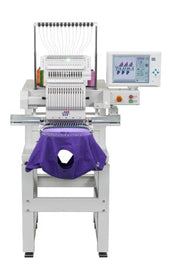The only guide you need for overlocking
A guide to overlocking
Have you ever wondered how to overlock on your sewing machine? With this easy to follow guide, you’ll be completing them in no time! Here is the only how-to guide you’ll need.
Completed using an overlocking foot, also known as an overedge foot or overcast foot, it is a kind of stitch that sews over the edge of one or two pieces of cloth for edging, hemming, or seaming. This is to essentially prevent the edge of the fabric from unravelling by folding it back on itself. Usually, an overlock sewing machine will often cut the edges of the cloth as they are fed through, however, some are made without cutters.
Overlocker foot for a domestic sewing machine
Using the guide, you should line your fabric edge up against the sewing machine guide and select which stitch you want to use. Once the fabric has been correctly lined up, double-check to make sure the needle won’t hit the metal in the centre with your selected stitch. Choose your stitch based on the weight of your fabric. To sew over the edges of light to medium fabrics, a stitch that only moves forward should suffice. For medium to heavy fabrics, you might want to choose a stitch that moves forwards and back for a stronger sew. Testing various stitches on scrap fabric is a good way to choose appropriately.
How does it work?
An overlock protects the raw edge of the fabric from fraying, keeping it looking neat for longer. It works with the bar in the centre which works to wrap the thread around the edge of the fabric as you stitch, whilst smartly preventing the fabric from curling.
The overcast foot works by having a bar in the centre that wraps the thread around the edge of the fabric as you stitch, whilst preventing the fabric from curling. This protects the raw edge of the fabric to stop it from fraying or unravelling.
How to sew a rolled hem
You can achieve this with a zigzag stitch by pressing the edge to curl up and over before feeding the fabric through to curl around the centre bar we outlined earlier. It might take you a few tries to get it right. Start by pressing the fabric end to start and line it up around the centre. Be careful when using a finger to push the fabric as you sew.
With this new skill added to your skillset, you’ll have neatly sewn edges, hems and seams from now on. Take a look at Sewingtime today to find the best equipment for your sewing machine.



